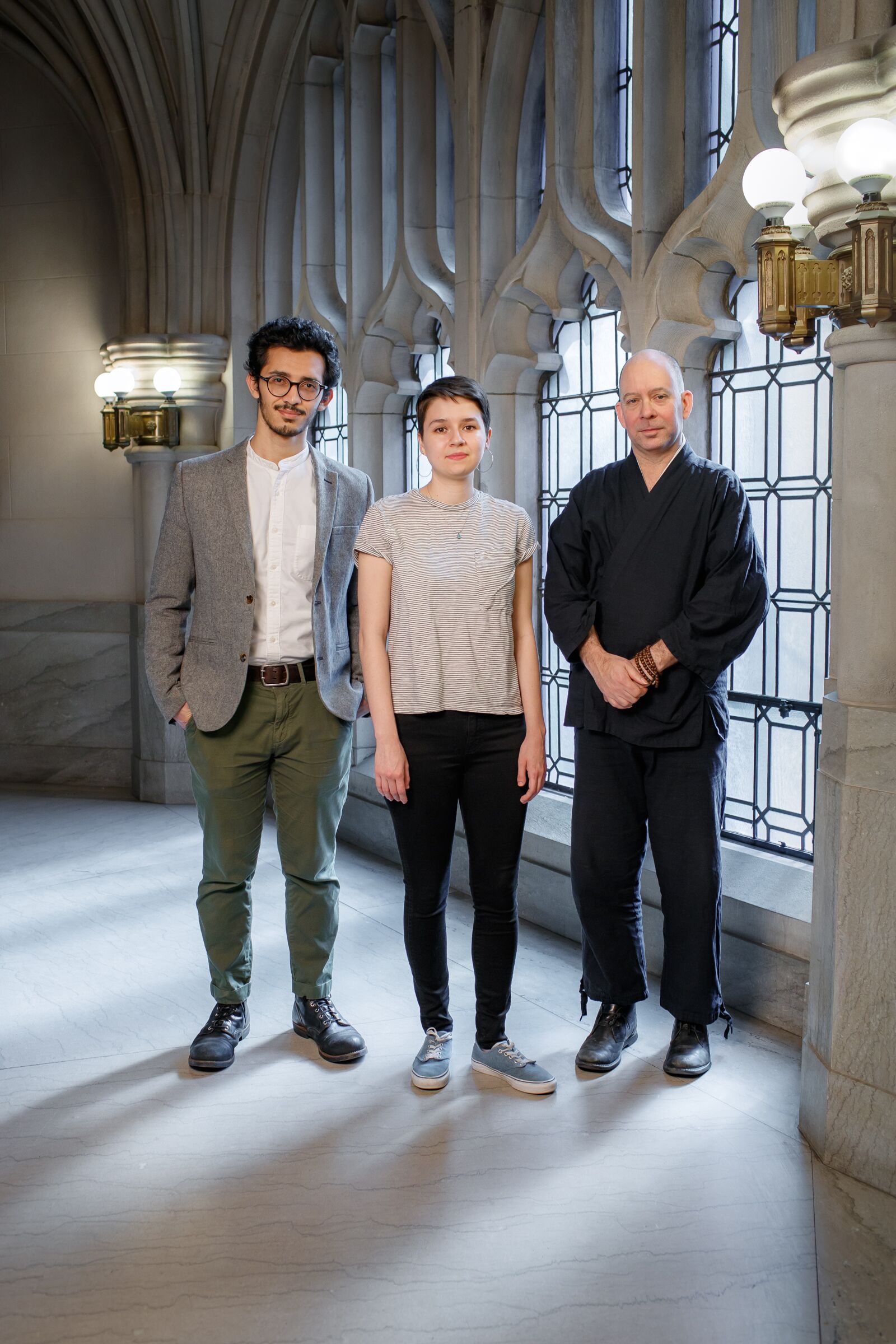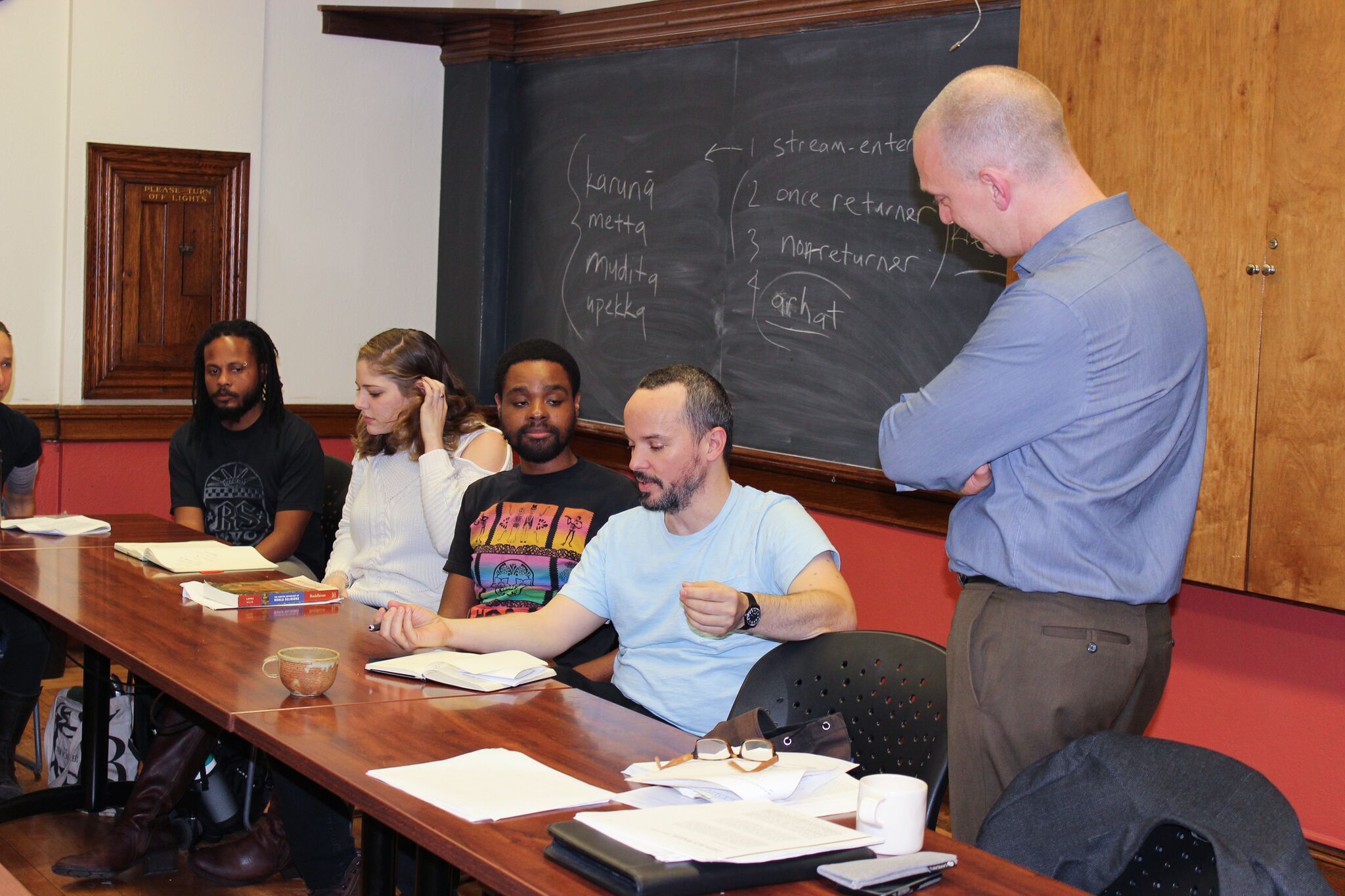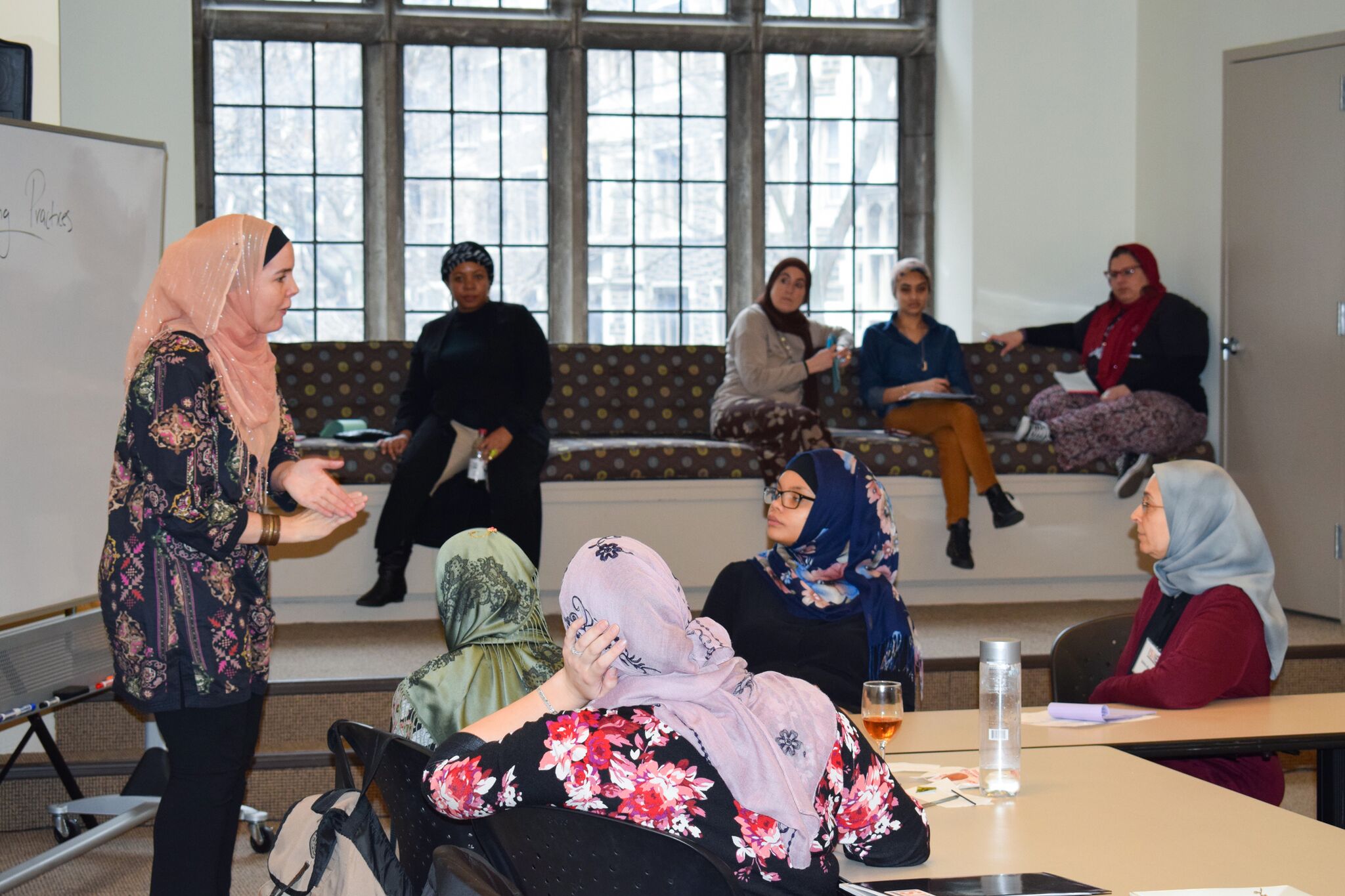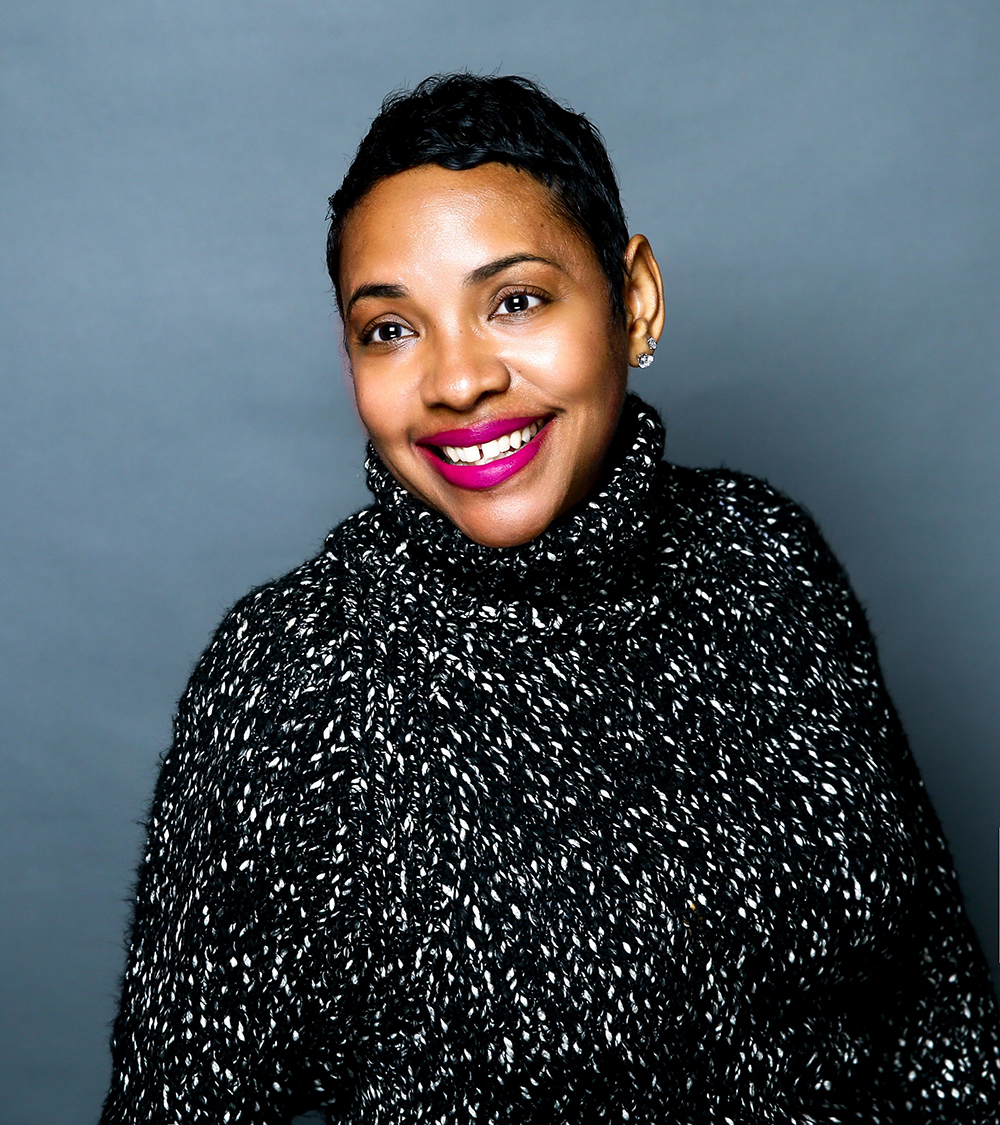By Simran Jeet Singh
Stop me if you’ve heard this one before. A Zen Buddhist priest and a Muslima scholar of Islam walk into a seminary and propose new M.Div. programs not tied to Christian ministry.
To those unfamiliar with Union Theological Seminary, this might sound like the setup to a bad punchline for religion nerds. But those who know Union’s history of being at the cutting edge of social change might be more inclined to believe that, of all places, Union would be one of the first major seminaries in the U.S. to open its doors to new programs devoted to non-Christian communities.
And those people would be right.
Union proudly boasts two newly-minted programs that fit this description: Islam and Interreligious Engagement (IIE), designed and directed by assistant professor Jerusha Rhodes, and Buddhism and Interreligious Engagement (BIE), founded and led by assistant professor Greg Snyder. Both are attracting students of diverse backgrounds, offering unprecedented depth in different traditions, and doing all of this with an eye towards what it means to deal with the disparities we encounter in the world around us.
For an institution to invest its resources in such programs at a time when provincialism and ethno-nationalism are building political momentum around the world is no accident. Union is putting its money where its mouth is, staking its claim with values of pluralism and inclusiveness.
If silence is complicity, then what Union is doing is the opposite. And just a few years into the experiment, the institution is already witnessing positive results.
New Perspectives on Justice

Though the degree programs are new, their genesis was long in coming—harkening back to when professor emeritus Paul Knitter and others helped establish interreligious engagement as a standalone discipline at Union. This strong foundation set the stage for the Buddhism program—conceived about 4 years ago at a gathering of interfaith contemplatives in Iran, where Greg Snyder first met President Serene Jones, aware of Union’s interest in interreligious engagement.
“Serene and I were there for about a week, and we had extensive conversations around Buddhist chaplaincy, social justice, and interreligious engagement at Union. She loved the idea and eventually invited me to come on and structure that program. That was exciting for me. A Buddhist chaplaincy program seated at a seminary with a storied history of commitment to social justice? With a history of liberation theology? That particular nexus didn’t exist anywhere else. How could I say no?”
The program covers expansive ground, and its benefits are immediately discernible. For example, BIE addresses a unique challenge that American Buddhist leaders face currently: the common form of monastic training in the US often does not equip emerging Buddhist leaders with skills for working with lay populations, such as families, rites of passage, community organizing issues, or caring for the sick and dying. BIE closes that gap.
Ian Case, a student in the program who previously studied Zen Buddhism for 12 years and is ordained as a Zen priest, says he was drawn in by the prospect of connecting the philosophies he had studied with the communities he interacted with and served: “I thought that Union—and the BIE program specifically—would help me clarify what it means to be a Buddhist priest in the world and in this city at this moment in time. Union’s unwavering focus on social justice and its intersection with faith and ministry made me excited about the possibility of continuing this dharma work in a seminary environment.”
In addition to building skills, the program opens up new conversations around Buddhist worldviews, experiences, and justice. Snyder explains that justice is not a concept indigenous to Buddhism—at least not the ways we understand social justice in relation to systemic violence and the state. And he believes that having this program situated at Union creates an opportunity for students to help shape a new American Buddhist liberation theology.
“For Buddhism to deepen its roots in the United States, it will have to metabolize notions of justice. That’s been happening since the violence of colonialism in Asia. Buddhists have had to understand what to do about that. So this is not something that’s brand new. But we’re still in the process of exploring that, and students are actually engaged with that question. Waters of social justice are flooding into the tradition and changing the flow. I think that’s important. I think that’s exciting. And students are doing really good work in that area.”
A student in the Buddhism track, Rachel Arrey, echoes this sentiment, saying the program’s attention to justice has been one of the most powerful aspects of her experiences so far: “Because Union has such a reputation for being committed to issues of justice, being here has presented an important opportunity to really examine my own commitments. In particular, I find myself considering deeply my own aspirations to be a part of and to nurture a community that is both loving and committed to justice. What does it really look like to live into both of those things in our relationships? How can we be both principled and kind?”

Snyder smiles when I read this statement back to him, clearly satisfied with how things have progressed so far. “Buddha was asking us to cultivate communities that have the capacity to metabolize our historical karma in ways that create a more compassionate and loving world,” he tells me. “But to metabolize that karma is serious work. And that’s what we’re starting to do. To sit down together and say we’re going to vow to be the beings we’re called to be.”
He smiles again, a glimmer in his eye. “You know what we’re doing here? We’re building a sangha. This is the first year we’re feeling like a sangha. It’s not perfect – we’re still figuring this out. But it feels right. We’re doing good stuff here. I’m excited to see how this develops.”
Engaging the Tough Questions
There are many symmetries between Union’s BIE program and its sister program on Islam, Social Justice, and Interreligious Engagement. Both are one-of-a-kind courses of study that are intellectually rigorous, praxis oriented, and rooted in the realities of marginalized experiences. Both are designed and led by charismatic and passionate educators who are beloved by their students. And both are attracting a range of students that has helped make Union the most diverse it has ever been.

At the same time, Professor Jerusha Rhodes is quick to point out that the two programs are markedly different—and intentionally so—to meet the unique needs of the students who come to the program and to account for the different dynamics within the Buddhist and Islamic experiences.
“One of the main differences between our programs is intention. Greg leads a religious community in a way that I don’t. He was looking to train people who would be in the same role as him. Another significant difference is that about half of the students in the IIE program identify as Muslim, and the other half are not Muslim but have interest in working with Muslim communities. Our program is designed to serve all of those students, not just future imams. We want to equip them to be able to lead with a knowledge of Islam and an ability to answer questions most other people can’t answer. And I want to do this for all the students in our program, whether they hope to become chaplains, journalists, or social workers.”
Rhodes describes her approach as being simultaneously outward looking and inward focused. Its intention is inward in that she wants to train people to read Islamic sources, understand Islamic debates, and become familiar with Islamic practices. It is outward in that she wants people to be able to use this core knowledge in conversations about topics that have been hard for the Muslim community to discuss openly, from Islamophobic hate and intra-Muslim racism to misogyny and violence. Students in the program say that they have never before encountered a space where they can talk about these issues and not have their commitments questioned.
It was in anticipation of these sorts of tough conversations that student Mohammad Mia applied to Union. And so far, he hasn’t been disappointed. “What I have received at Union has been a space to engage in critical questions surrounding religious differences, religious plurality, and what it means to live a life informed by faith. As a child I would often turn to my parents with questions about my religion, yet the ways in which they had been taught Islam rarely made room for questions. They struggled to provide me with answers they themselves did not possess and I was often directed to spiritual teachers within my community, who often felt disconnected from the realities of navigating the United States as a young Muslim immigrant.”
Rhodes employs this pedagogical approach with intention, hoping to open up spaces for students to engage the tough questions around their traditions, their convictions, and the social disparities they witness. She believes this examination is precisely the way to help students cultivate agency, particularly seminary students who are inclined to grow through personal reflection and challenging conversations.
The practice of questioning is not just beneficial for practicing Muslims, Rhodes points out. The program is also designed to help non-Muslims understand the tradition from multiple perspectives, including history, texts, practices, and lived experiences. For student Neonu Jewell, IIE serves as a powerful case study for enhancing how we think about diversity and inclusion, particularly because of its commitment to exploring how Muslims relate to other communities in modern America.

“Before coming to Union, I had been doing a lot of work in diversity and inclusion in corporate spaces. I had been noticing that workplaces are talking a lot more about diversity and workplaces are becoming more diverse—but religion is the aspect of inclusion that gets discussed the least,” says Jewell. “This program is helping me understand how Christian privilege impacts other communities, whether it’s how Muslims might want to pray at work and what that ritual means to them or if it’s something like Ramadan, where a Muslim may not have eaten all day but is expected to sit through late meetings. If we really mean it when we say people should bring their whole selves to work, we need to invest more in understanding what people’s whole selves actually are.”
The three-pronged approach of Islam, Social Justice and Interreligious Engagement means that students come in with a range of experiences and expertise in each of those three aspects. Whereas Jewell might have more experience with interreligious engagement, Mia might be more steeped in the Muslim community. And as anyone who attended the institution can attest, this is the magic of Union: thoughtfully bringing together people with diverse experiences and skill sets to facilitate incredible conversations, maturation, and friendships.
Of all her accomplishments within her still-young program, Rhodes says this is by far the aspect of which she is most proud. As always, she shares this feeling with a touch of her sincere modesty.
“There’s a lot to be happy about already, but I’m happiest about what it’s done for the students. I love watching them be fully engaged, I love watching them grow intellectually, and I love watching them grow in their ability to empathize with and respect one another. I’m more of a shepherd in that respect than a guide. But it’s still exciting and satisfying for me. I love being present to watch people grow in their commitments. It’s all a beautiful privilege.”
A Model for Religious Education
As an outside observer and admirer of Union Theological Seminary, and as a Sikh who was born and raised in the United States, I find that these two new programs inspire a bubbling of hope inside of me. Here are three reasons why.
First, they come as relief in a world that seems increasingly fractured along the lines of religious difference. For a powerful institution like Union to reflect seriously on its own role in resolving these issues, and then to make a conscious decision to break from tradition and open its doors to other religious communities—this is a meaningful display of authentic compassion.
Second, these two programs offer compelling models for what religious education ought to look like in our country. Religious diversity is a reality of our time, and religious leaders no longer have the option of whether or not to engage with communities other than their own. Training on how to live with one’s own commitments while respecting and honoring our neighbors—this is sorely needed in our world today.
Third, the testimonies from the students and faculty in these programs prove what so many of us believe but so rarely see come to fruition. We have faith that if we are purposeful about creating the right conditions, and if we are able to bring in people with the right intentions, interreligious engagement has the potential to be an immeasurably transformative experience for everyone involved—this is what these new programs are modeling for us today.
That these cutting-edge programs and their unique contributions align with the mandate, vision, and history of Union Theological Seminary should come as no surprise to those of us familiar with the institution. But that doesn’t mean we shouldn’t stop to celebrate them. Rather, this is precisely the type of progress that we must acknowledge and honor if we truly want to press forward together.
—
Dr. Simran Jeet Singh is an educator, writer, activist, and scholar. He earned his PhD in Religion from Columbia University, where he currently serves as the first-ever Sikh Religious Life Advisor. He is a post-doctoral fellow at NYU’s Center for Religion and Media, Senior Fellow for the Sikh Coalition, and on the board for the Religion News Association. Simran lives with his family on the Upper East Side, and he spends far too much of his time playing and watching sports.
